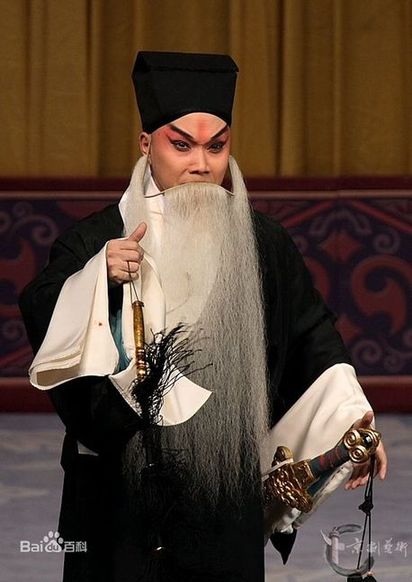 |
|
Picture show a lao sheng role with a grey beard. [Photo/baike.baidu.com]
|
If you have certain knowledge of the Peking Opera and its history, you may wonder why female performers are rare in the history of Peking Opera. And why did the most famous master artist, Mei Lanfang, (1894-1961) play the role of dan that is a general term for a female character? Why does the jing role wear different facial makeup and does it have a meaning? In the following section, I will give you a clear picture about the roles in Peking Opera.
The origin of Peking Opera character categorization can be traced back to the Yuan Dynasty (1206-1370). According to the gender and disposition, characters in the opera are basically divided into four roles: sheng (male character type), dan (female character type), jing (character type with painted face), and chou (a clown). Each role has its own subdivisions.
Sheng literally means unfamiliar, but this type requires skilled players specializing in singing and recitation. Sheng can be divided into four types.
First, lao sheng is a middle-aged or old man with beard (black or grey). The lao sheng is dignified and refined. Traditionally, such a role is performed by men, but Meng Xiaodong (1907-1977), as a famed female performer of lao sheng, played an important role in winning a place for women performers on the Peking Opera stage.
Second, wu sheng, or acrobat, specializes in long weapons or short weapons. The most impressive wu sheng role is that of the Monkey King, the hero in the classic novel, Pilgrimage to the West.
Third, xiao sheng, playing a young man, sings and recites with a combination of real and false voices and doesn’t wear a beard.
And fourth, hong sheng, plays characters with a red face. A typical hong sheng role is Guan Yu, a general in the classic novel, Romance of the Three Kingdoms.
